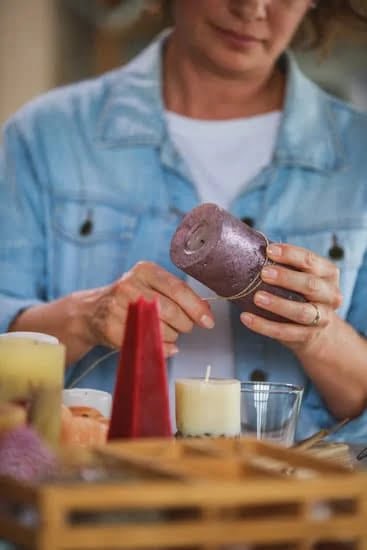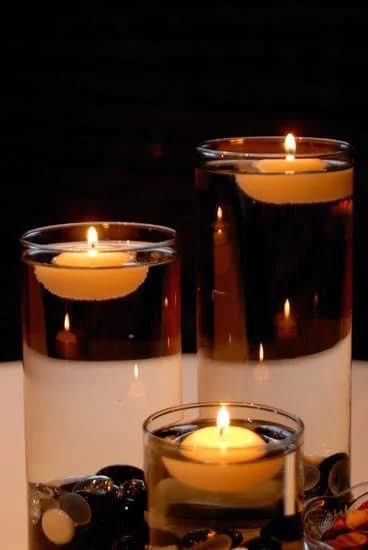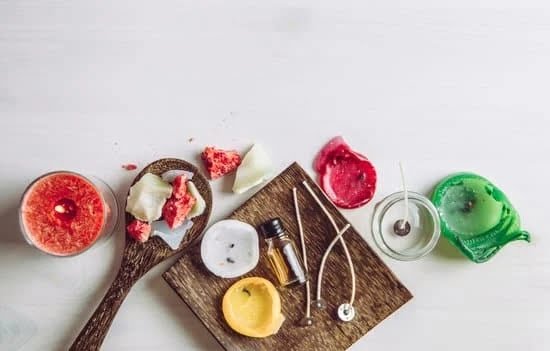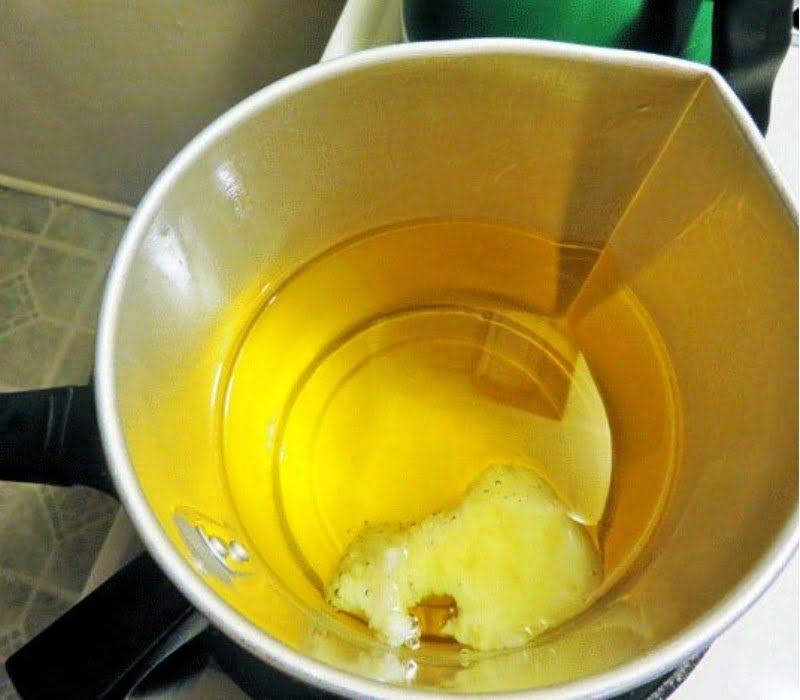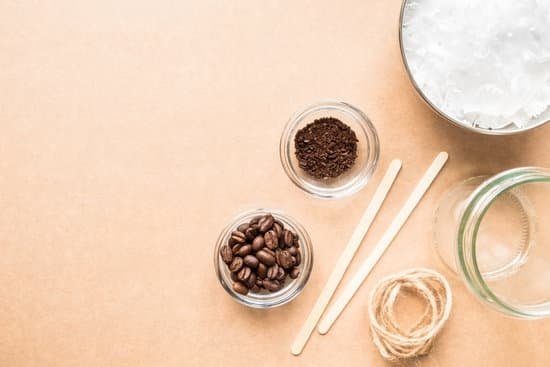Candle making is a timeless craft that captures the essence of creativity and expression. Beyond their beautiful glow, candles have the power to create a serene ambience and evoke emotions within us. And what better way to enhance this enchanting experience than by infusing your candles with delightful aromas? Welcome to the world of aromatherapy in candle making, where the magic truly happens.
When it comes to creating scented candles, one of the most crucial elements is selecting the right oils. Essential oils, derived from various plants and botanicals, bring an array of captivating fragrances and therapeutic benefits to your creations. From soothing lavender that promotes relaxation to invigorating citrus notes that uplift your mood, there are endless possibilities when it comes to choosing essential oils for candle making.
In this article, we will take you on a journey through the captivating world of aromatherapy in candle making. Whether you are a beginner or an experienced candle maker looking to expand your knowledge, we have got you covered. Dive into our comprehensive guide as we explore essential oils, their properties, and how they can elevate your candle-making process. Discover tips for blending different oils and creating custom combinations that reflect your unique style and preferences.
Join us as we unravel the myriad benefits of incorporating essential oils into your candles – not only for their wonderful scents but also for their potential therapeutic effects on your well-being. And don’t worry – we will address any safety considerations you need to keep in mind while working with essential oils in candle making. So get ready to unleash your creativity and immerse yourself in the magical world of aromatherapy-infused candles.
Understanding Essential Oils
Essential oils are a key component in candle making, as they provide the fragrance and aromatherapy benefits that make candles so enjoyable. But before diving into the world of essential oils, it’s important to have a basic understanding of what they are and how they work.
Essential oils are highly concentrated plant extracts that are obtained through various methods such as steam distillation or cold pressing. They capture the natural essence and scent of plants, flowers, fruits, and herbs, making them ideal for adding fragrance to candles. Each essential oil has its own unique aroma and properties, which can range from relaxing and soothing to invigorating and energizing.
When choosing essential oils for your candle making project, it’s crucial to consider the quality of the oils. Look for pure, undiluted essential oils that are derived from high-quality sources. Synthetic or diluted oils may not provide the same therapeutic benefits or long-lasting scent as pure essential oils.
To incorporate essential oils into your candles, you will need to calculate the appropriate ratio based on the total weight of wax used. Generally, a rule of thumb is to add about 1 ounce of essential oil per pound of wax. However, this ratio can vary depending on personal preference and the strength of the particular oil being used.
It is also worth noting that some essential oils have a stronger scent throw than others. For example, citrus-based oils like lemon or orange tend to be more potent than floral scents like lavender or rose. Experimenting with different combinations and ratios can help you achieve your desired fragrance level in your candles.
By familiarizing yourself with essential oils and their characteristics, you’ll be better equipped to create beautifully scented candles that suit your preferences and needs.
Choosing the Perfect Base Oils for Your Candles
When it comes to candle making, choosing the perfect base oils is essential for creating high-quality and long-lasting candles. Base oils serve as the main ingredient in candles and are responsible for providing fuel for the flame. They also contribute to the overall texture, burn time, and scent throw of the candles.
There are several factors to consider when selecting base oils for your candles. One important factor is the melting point of the oil.
Different oils have different melting points, and it’s crucial to choose an oil with a melting point that is suitable for your specific candle-making technique. For example, if you plan to make container candles, you’ll want to choose base oils with a low melting point that will easily melt and distribute evenly within the container.
Another consideration when choosing base oils is their compatibility with fragrances or essential oils. Some oils have a stronger scent throw than others, so it’s important to choose oils that will not overpower or mask the fragrance you plan to use in your candles. Additionally, certain base oils may have a longer shelf life compared to others, so consider how long you intend for your candles to last when selecting your base oils.
| Base Oil | Melting Point | Scent Throw | Recommended Use |
|---|---|---|---|
| Soy Wax | 120°F (49°C) | Excellent | Container Candles |
| Beeswax | 144-147°F (62-64°C) | Moderate | Pillar Candles, Taper Candles |
| Paraffin Wax | 120-160°F (49-71°C) | Good | Votive Candles, Pillar Candles |
| Coconut Oil | 76°F (24°C) | Moderate | Tarts, Massage Candles |
Using this table as a guide, you can select the base oils that best suit your candle-making goals and preferences. Remember to consider the specific requirements of your chosen candle-making technique and the desired scent throw when making your selection. By choosing the perfect base oils, you’ll create beautiful candles that burn evenly, smell wonderful, and provide a delightful ambiance to any space.
Top Fragrant Essential Oils for Candle Making
Lavender Essential Oil
One of the most popular and versatile essential oils for candle making is lavender oil. Known for its calming and soothing properties, lavender oil is not only a great choice for relaxation but also helps to create a peaceful atmosphere in your home.
The scent of lavender can promote better sleep, reduce stress and anxiety, and even alleviate headaches. When used in candles, lavender essential oil provides a subtle yet fragrant aroma that can fill the entire room with its delightful scent.
Peppermint Essential Oil
For those looking to add a refreshing and invigorating scent to their candles, peppermint essential oil is an excellent choice. With its minty undertones, peppermint oil creates a cooling effect that uplifts the mind and energizes the senses. The crisp aroma of peppermint can help combat fatigue, improve focus, and provide relief from respiratory congestion. Whether used alone or blended with other essential oils, adding peppermint essential oil to your candles will infuse them with a revitalizing fragrance.
Citrus Essential Oils (Lemon, Orange, Grapefruit)
Citrus essential oils such as lemon, orange, and grapefruit are known for their vibrant and zesty scents. These oils bring a cheerful and uplifting vibe to any space they’re infused into. Lemon essential oil is often used to promote mental clarity and boost mood.
Orange essential oil has sweet notes that evoke feelings of happiness and positivity. Grapefruit essential oil has a tangy aroma that can enhance productivity and increase concentration levels. Incorporating these citrus oils into your candles will create an ambiance filled with freshness and positivity.
Vanilla Essential Oil
If you prefer warm and comforting scents in your candles, vanilla essential oil is the perfect choice. With its sweet and inviting aroma, vanilla oil adds depth and richness to any blend. The familiar scent of vanilla creates a cozy and homely atmosphere, perfect for relaxation and unwinding.
In addition to its delightful fragrance, vanilla essential oil is also known to have a calming effect on the mind and body. By using vanilla essential oil in your candles, you can create a comforting environment that soothes the senses.
Whether you prefer floral, minty, citrusy, or sweet scents, these top fragrant essential oils for candle making offer a wide range of options to suit your preferences. Experiment with different combinations or use them individually to create customized candles that fill your space with delightful aromas. From promoting relaxation to providing an energizing boost, these essential oils will add an extra touch of magic to your candle making journey.
The Benefits of Blending Essential Oils in Candle Making
Enhancing Fragrance
Blending essential oils in candle making allows for a wider range of fragrance options and the ability to create unique and complex scents. By combining different essential oils, you can achieve a more sophisticated and layered aroma that is not possible with a single oil alone. For example, blending lavender with vanilla creates a soothing and comforting scent, while combining citrus oils like lemon and orange can result in an uplifting and invigorating fragrance.
Promoting Emotional Well-being
Another benefit of blending essential oils in candle making is the ability to promote emotional well-being. Essential oils have been used for centuries for their therapeutic properties, including their ability to uplift moods, reduce stress, and promote relaxation. By carefully selecting and blending essential oils known for their specific effects on the mind and emotions, you can create candles that help create a desired atmosphere or mood in your space.
For instance, combining lavender, bergamot, and chamomile essential oils can create a calming blend that is perfect for promoting relaxation and sleep. On the other hand, blending peppermint, eucalyptus, and rosemary essential oils can create an invigorating blend that boosts energy levels and improves focus.
Personalization and Creativity
Blending essential oils in candle making allows you to personalize your creations according to your preferences or the preferences of others. You can experiment with different combinations of scents until you find the perfect blend that resonates with you or your intended audience. The possibilities are endless when it comes to creating customized candles with unique fragrances.
Furthermore, blending essential oils in candle making encourages creativity as you explore various scent profiles and combinations. It offers an opportunity to express yourself through sensory experiences by creating one-of-a-kind aromas that reflect your personality or capture specific memories or moments.
Tips for Properly Incorporating Essential Oils into Your Candle Wax
When it comes to candle making, incorporating essential oils into your wax properly is crucial for achieving the desired fragrance and ensuring that your candles burn safely and effectively. Here are some tips to help you properly incorporate essential oils into your candle wax:
- Temperature Control: Essential oils are volatile and can evaporate if exposed to high temperatures. It’s important to add the essential oils to your candle wax when it has cooled down slightly but is still in a liquid state. For most waxes, a temperature of around 185°F (85°C) is ideal.
- Measure Carefully: Essential oils are highly concentrated, so a little goes a long way. Be sure to measure the amount of essential oil you need accurately using a dropper or pipette, following the recommended guidelines for scent strength in candle making.
- Stir Gently: Once you’ve added the essential oil to your melted wax, stir it gently and thoroughly to ensure even distribution. Avoid stirring vigorously as it can cause air bubbles or splashing, which may affect the quality of your finished candles.
- Test for Scent Strength: Before pouring the scented wax into your candle containers, it’s important to conduct a scent test. Dip an unlit cotton wick into the scented wax and let it cool for a few minutes. Once cooled, smell the wick to check if the scent is too strong or too weak. Adjust the amount of essential oil accordingly to achieve your desired fragrance intensity.
- Consider Candle Curing Time: Some essential oils may need time to develop their full scent potential. Allow your scented candles to cure for at least 24 hours before lighting them. This will help the fragrance fully permeate the wax and provide a more consistent scent throw when burned.
- Keep Safety in Mind: While essential oils can add wonderful aromas to your candles, it’s important to remember that some oils have a low flashpoint and can be flammable in concentrated forms. Always follow safety guidelines and use established recommendations for maximum usage rates when incorporating essential oils into your candle wax.
| Tips for Properly Incorporating Essential Oils into Your Candle Wax |
|---|
| Temperature Control: Add essential oils to cooled-down liquid wax at around 185°F (85°C). |
| Measure Carefully: Use a dropper or pipette to accurately measure the amount of essential oil needed. |
| Stir Gently: Stir melted wax and essential oil mixture gently and thoroughly for even distribution. |
By following these tips, you can ensure that your candles are beautifully scented and safe to burn. Experiment with different essential oil combinations and enjoy the process of creating customized aromatherapy-infused candles that enhance your space with delightful fragrances.
Exploring the Different Scent Strengths of Essential Oils
When it comes to candle making, one important factor to consider is the scent strength of essential oils. The scent strength will greatly affect the overall aroma and fragrance intensity of your candles. Understanding the different levels of scent strength in essential oils can help you create a well-balanced and pleasing scent for your candles.
Essential oils are classified into three different levels of scent strength: top note, middle note, and base note. Each note has its own unique characteristics and contributes to the overall fragrance profile of your candle.
- Top notes: These are the first scents that you smell when you burn a candle. They are light, fresh, and have a high volatility. Examples of top note essential oils include lemon, bergamot, and eucalyptus. Top notes tend to evaporate quickly, so they provide an initial burst of fragrance that may fade over time.
- Middle notes: Also known as heart notes, these scents emerge after the top notes have evaporated. Middle note essential oils have a moderate intensity and serve as a bridge between the top and base notes. Examples of middle note essential oils include lavender, geranium, and rosemary. They add depth and complexity to the fragrance profile of your candles.
- Base notes: These are the longest-lasting scents in your candles. Base note essential oils have a rich and heavy aroma with low volatility. They provide a strong foundation for the overall fragrance blend. Examples of base note essential oils include cedarwood, patchouli, and vanilla. Base notes generally take longer to release their aroma but can linger in the air for hours.
By understanding these different scent strengths, you can create well-rounded fragrances that evolve over time when burning your candle. Mixing different combinations of top, middle, and base notes can result in unique aromas that cater to different preferences or moods.
| Essential Oil | Scent Strength |
|---|---|
| Lemon | Top note |
| Lavender | Middle note |
| Patchouli | Base note |
Remember, experimenting with different combinations of scent strengths can lead to exciting and unique fragrance profiles for your candles. Don’t be afraid to get creative and explore the possibilities that different essential oils offer.
How to Create Customized Candles with Essential Oil Combinations
Creating customized candles with essential oil combinations is a fantastic way to explore your creativity and enhance the ambiance in your home. By combining different essential oils, you can create unique scents that cater to your personal preferences. Here are some steps to guide you in creating customized candles with essential oil combinations.
Step 1: Understand the Properties of Essential Oils
Before you start blending essential oils, it’s important to have a solid understanding of their properties and how they interact with each other. Each essential oil has its own scent profile, intensity, and therapeutic benefits. Some oils may complement each other well, while others may overpower or clash when blended together. Researching the properties and notes of different essential oils will help you make informed decisions when selecting combinations.
Step 2: Start with a Base Scent
To create a customized candle fragrance, it’s helpful to start with one primary scent as the base. This can be an essential oil that you particularly love or one that has strong therapeutic properties. Common base scents include relaxing lavender, uplifting citrus, or calming chamomile.
Step 3: Experiment and Blend
Once you’ve chosen your base scent, it’s time to experiment and blend additional essential oils to create a more complex fragrance. Start by adding small amounts of complementary scents until you achieve the desired aroma. As you experiment, take note of the ratios used for future reference.
Keep in mind that some scents may change after the candle has been burned due to heat exposure. It can be helpful to test small batches before committing to large quantities of a specific blend.
By following these steps and experimenting with different combinations, you can create candles with unique fragrances that reflect your personal taste and preferences.
Remember to always follow safety guidelines when working with candles and essential oils. Use suitable candle-making materials and ensure proper ventilation when melting wax and adding essential oils.
Creating customized candles with essential oil combinations allows you to personalize your space with beautiful scents that promote relaxation, enhance mood, and bring about a sense of well-being. Unleash your creativity and enjoy the process of blending different essential oils to create your signature candle fragrances.
Safety Considerations
When using essential oils in candle making, it is important to prioritize safety to ensure a positive and safe experience. Here are some key considerations to keep in mind:
- Dilution: Essential oils are highly concentrated plant extracts and should not be used undiluted directly into candle wax. It is crucial to dilute them properly before adding them to your candles. The general guideline for dilution is about 3-5% essential oil per ounce of wax. This helps to prevent any skin irritation or sensitization when the candle is burned.
- Flash Point: Every essential oil has a specific flash point, which is the temperature at which it can combust or catch fire. It is vital to know the flash point of each oil you use in order to ensure safe handling and burning of your candles. Ensure that the flash point of the oils you choose is higher than the melting point of your candle wax.
- Testing: Before creating a large batch of candles, always perform small test burns with different essential oils and combinations to check for any adverse reactions or issues. This allows you to identify any potential problems such as excessive smoking, overheating, or poor scent throw before they become bigger concerns.
- Quality Assurance: Choose high-quality, pure essential oils from reputable suppliers for your candle making projects. Quality assurance ensures that you are using oils that have been tested for purity, consistency, and safety standards.
Incorporating these safety considerations into your candle making practice will help you have confidence in the quality and safety of your finished products while enjoying the aromatic benefits of essential oils.
- Dilute essential oils properly before adding them to candles.
- Know the flash point of each oil used and make sure it is higher than the melting point of your wax.
- Perform small test burns with different oils before creating larger batches.
- Use high-quality, pure essential oils from reputable suppliers.
Frequently Asked Questions (FAQs) About Essential Oils for Candle Making
When it comes to making candles with essential oils, beginners often have many questions. In this section, we will address some of the most frequently asked questions (FAQs) about using essential oils for candle making.
Can I use any essential oil in my candles?
While you can technically use any essential oil in your candles, it is important to consider the scent’s compatibility with the wax and its performance when burning. Some essential oils may not have a strong enough scent throw, while others might react negatively with certain waxes. It is recommended to do research or consult a candle making supplier to ensure that the essential oil you choose is suitable for candle making.
How much essential oil should I add to my candles?
The amount of essential oil to use in your candles depends on several factors, including the type of wax, desired fragrance strength, and personal preference. As a general guideline, around 6-10% fragrance load is commonly used for soy or coconut wax candles. For paraffin wax candles, it is typically between 5-7%. However, it is always advisable to check the specific recommendations provided by the manufacturer of your chosen wax and essential oil.
Can I mix different essential oils together?
Yes. Mixing different essential oils together allows you to create unique scent combinations and tailor them to your preferences. Blending different oils can result in complex and layered fragrances that are pleasing to the senses. However, it is important to keep in mind that not all essential oils blend well together, so be sure to do a small test batch before committing to a large quantity.
How long will the fragrance of my candle last?
The longevity of a candle’s fragrance depends on various factors such as the quality of the ingredients used and how the candle was made. Different scents also have varying degrees of volatility, which affects their scent throw.
As a general rule, essential oils with lighter notes tend to dissipate faster than those with heavier aroma profiles. However, it is reasonable to expect the fragrance of a well-made candle using quality essential oils to last for several weeks or even months when stored properly.
Are essential oil candles safe to burn?
When used correctly and in moderation, essential oil candles are generally safe to burn. However, there are some considerations to keep in mind. Essential oils are highly concentrated substances and should be handled with care.
It is crucial to follow proper safety guidelines when working with them and avoid exceeding recommended fragrance load percentages. Additionally, certain oils may have specific precautions due to their chemical properties, so it is important to research any potential safety concerns before using them in your candles.
By addressing these frequently asked questions surrounding the use of essential oils in candle making, you can gain a better understanding of how to incorporate these fragrant ingredients into your creations safely and effectively. Remember, experimenting and exploring different combinations will help you unleash your creativity and create truly unique aromatherapy-infused candles.
Conclusion
In conclusion, the world of candle making offers a delightful opportunity to explore the magic of aromatherapy and unleash your creativity. By understanding essential oils, choosing the perfect base oils, and blending fragrances, you can create personalized candles that not only beautify your space but also soothe the mind and enhance well-being.
Using essential oils in candle making allows you to tailor the scent experience to your preferences and needs. From calming lavender to invigorating citrus, there is a wide array of fragrant essential oils available for you to choose from. Blending different essential oils enables you to create unique combinations that reflect your personality and mood.
When incorporating essential oils into your candle wax, it is important to follow proper techniques to ensure safety and optimal fragrance diffusion. By properly measuring and mixing the oils with the wax, you can achieve a balanced scent that fills your space without overwhelming it.
Remember to consider scent strengths when selecting your essential oils. Some oils have a stronger aroma than others, so it is important to understand their potency and how they interact with one another. Experimenting with different combinations will help you find the perfect balance for your customized candles.
Overall, creating aromatherapy-infused candles provides not only a relaxing hobby but also an avenue for self-expression. Let your imagination run wild as you explore various essential oil combinations and discover scents that inspire tranquility or rejuvenation. Unleash your creativity by delving into the art of candle making with essential oils – creating personalized candles that bring peace and harmony into any environment.
Frequently Asked Questions
What oils are best for candle making?
The best oils for candle making are typically those with a high melting point and a low scent throw, allowing for a longer, cleaner burn. One popular option is soy wax, which is derived from soybean oil. Soy wax has a lower melting point and can hold fragrance oils well, resulting in more efficient and evenly burning candles.
Other common choices include beeswax, coconut oil, and palm wax, all of which offer their own unique characteristics when it comes to candle making. Ultimately, the choice of oil depends on personal preference and the desired outcome for the candles.
Can you use any oil to make candles?
While it is possible to use various types of oils for candle making, not every oil is suitable or safe for this purpose. It’s important to consider the specific qualities needed in an oil for effective candle making. Oils that have a low melting point or produce excessive smoke when burned may result in poor-quality candles that do not burn properly or emit unpleasant odors.
Additionally, some oils may not mix well with waxes or create undesirable effects such as discoloration or separation. Therefore, using any oil without consideration can negatively impact the overall quality of the candles.
Do you need special oils for candle making?
Special oils specifically formulated for candle making are not always necessary but can certainly enhance the overall results. These specialized oils are designed to provide optimal fragrance throw and compatibility with different types of waxes commonly used in candle making. They often undergo extensive testing to determine their performance, ensuring consistent scent distribution throughout the burn time of the candle.
However, many experienced candle makers also experiment with essential oils or blends derived from natural sources to achieve unique scents and benefits in their creations. Ultimately, whether special oils are required or not largely depends on one’s preference and dedication to achieving specific results in their homemade candles.

Welcome to my candle making blog! In this blog, I will be sharing my tips and tricks for making candles. I will also be sharing some of my favorite recipes.

